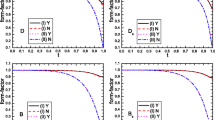Abstract.
We report on how to tackle the problem of establishing a chiral effective field theory in nuclear matter with explicit pion fields and in the presence of external sources (Ann. Phys. 297, 27 (2002)). We have made use of the results of J.A. Oller (Phys. Rev. C 65, 025204 (2002)) where the generating functional for the in-medium chiral SU(2) x SU(2) Lagrangian has been derived. Within this approach we develop the so-called standard power counting rules for the calculation of in-medium pion properties if the residual nucleon energies are of the order of the pion mass. In addition, for the case of vanishing residual nucleon energies, a modified scheme (non-standard counting) is introduced. For both schemes the pertinent scales where the chiral expansions have to break down are established as well. We have performed a systematic analysis of n-point in-medium Green functions up to and including next-to-leading order when the standard rules apply. These include the in-medium contributions to quark condensates, pion propagators, pion masses and couplings of the axial-vector, vector and pseudoscalar currents to pions.
Similar content being viewed by others
References
U.-G. Meißner, J.A. Oller, A. Wirzba, Ann. Phys. 297, 27 (2002).
J.A. Oller, Phys. Rev. C 65, 025204 (2002).
S. Weinberg, Physica A 96, 327 (1979).
J. Gasser, H. Leutwyler, Ann. Phys. (N.Y.) 158, 142 (1984).
D.B. Kaplan, A.E. Nelson, Phys. Lett. B 175, 57 (1986).
G.E. Brown, K. Kubodera, M. Rho, V. Thorsson, Phys. Lett. B 291, 355 (1992)
V. Thorsson, A. Wirzba, Nucl. Phys. A 589, 633 (1995)
M. Kirchbach, A. Wirzba, Nucl. Phys. A 604, 395 (1996)
N. Fettes, U.-G. Meißner, S. Steininger, Nucl. Phys. A 640, 199 (1998).
N. Fettes, U.-G. Meißner, Nucl. Phys. A 676, 311 (2000).
J. Gasser, M.E. Sainio, A. Svarc, Nucl. Phys. B 307, 779 (1988).
E.G. Drukarev, E.M. Levin, Prog. Part. Nucl. Phys. 27, 77 (1991).
T.D. Cohen, R.J. Furnstahl, D.K. Griegel, Phys. Rev. C 45, 1881 (1992).
V. Bernard, N. Kaiser, U.-G. Meißner, Nucl. Phys. A 615, 483 (1997).
P. Büttiker, U.-G. Meißner, Nucl. Phys. A 668, 97 (2000).
H. Gilg, Phys. Rev. C 62, 025201 (2000).
K. Itahasi, Phys. Rev. C 62, 025202 (2000).
N. Kaiser, W. Weise, Phys. Lett. B 512, 283 (2001).
M. Kirchbach, D.O. Riska, Nucl. Phys. A 578, 511 (1994).
Author information
Authors and Affiliations
Corresponding author
Additional information
Received: 30 September 2002, Published online: 22 October 2003
PACS:
12.39.Fe Chiral Lagrangians - 11.30.Rd Chiral symmetries - 21.65. + f Nuclear matter
Rights and permissions
About this article
Cite this article
Wirzba, A., Meißner, UG. & Oller, J.A. In-medium chiral perturbation theory. Eur. Phys. J. A 18, 507–510 (2003). https://doi.org/10.1140/epja/i2002-10271-9
Issue Date:
DOI: https://doi.org/10.1140/epja/i2002-10271-9




